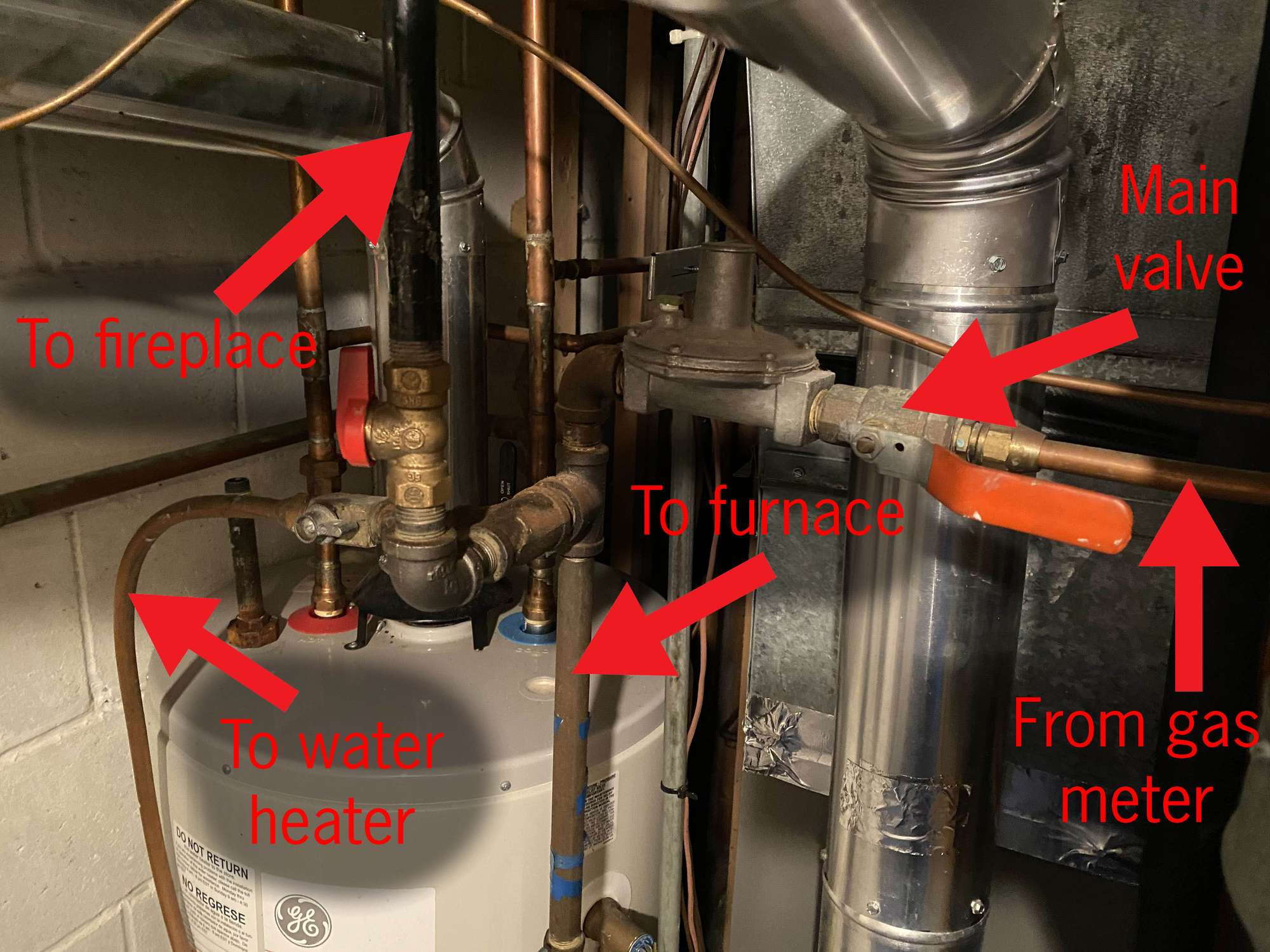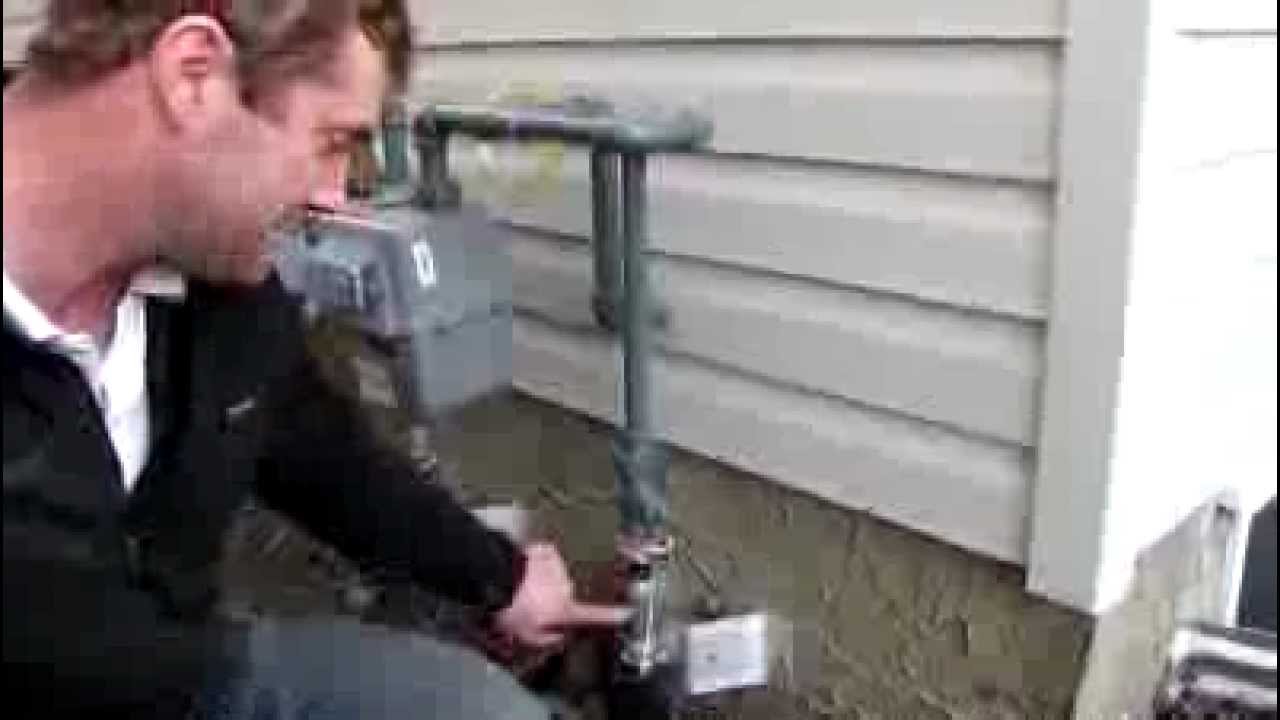I was recently faced with the task of tapping into a gas line for my garage heater. I had never done anything like this before, so I did a bit of research to figure out the best way to go about it. I found that the easiest way to tap into a gas line is to use a T-fitting.
This fitting allows you to connect a new line to an existing one without having to cut into the existing line. I also found that it is important to use a pipe wrench to tighten the fitting so that it does not leak.
If you’re looking to add a gas line to your garage for a heater, you’re in luck. Tapping into an existing gas line is relatively easy and can be done in a few simple steps.
First, locate the nearest gas line to your garage.
This can be done by looking at your home’s blueprint or contacting your local utility company. Once you’ve found the gas line, mark the spot where you’ll be tapping into it with a piece of tape or a marker.
Next, use a drill to make a small hole in the gas line.
Be sure to wear safety goggles while doing this.
Once the hole is drilled, use a pipe tap to create threads in the gas line. This will allow you to screw in a fitting that will connect your new gas line to the existing one.
Finally, screw in the fitting and turn on the gas. You should now have a working gas line for your garage heater!
Tying into gas pipe
How do you tap into a gas line?
If you need to tap into a gas line, the first step is to shut off the gas supply. Then, you will need to cut into the gas line with a hacksaw. Once you have cut into the gas line, you will need to use a wrench to loosen the nut that is holding the pipe in place.
After you have loosened the nut, you can then remove the pipe from the gas line. Next, you will need to install a T-fitting into the gas line. To do this, you will need to use a wrench to tighten the fitting onto the gas line.
Finally, you can turn the gas back on and test the new connection.
Can you run a gas line through a garage?
If you’re considering running a gas line through your garage, there are a few things you need to know. First, running a gas line is a major project that should only be undertaken by a professional. Second, you need to make sure your garage is properly ventilated.
And third, you need to be aware of the potential dangers of working with gas.
Running a gas line through your garage is a major project that should only be undertaken by a professional. Gas is a highly combustible material, and even a small mistake can be disastrous.
If you’re not experienced in working with gas, it’s best to leave this job to the professionals.
Your garage needs to be properly ventilated when working with gas. Gas fumes are dangerous, and can quickly build up in an enclosed space.
Make sure your garage has good ventilation before starting any work.
Working with gas can be dangerous. Gas leaks are a serious fire hazard, and can also be explosive.
How do you hook up a gas line to a heater?
If you’re looking to hook up a gas line to your heater, there are a few things you need to keep in mind. First, you’ll need to make sure you have the right tools for the job. This includes a wrench, a screwdriver, and a pipe cutter.
You’ll also need to have a length of gas line that’s appropriate for your heater. Once you have all of your supplies, you can follow these steps to hook up your gas line:
1. Turn off the gas to your heater.
This is an important safety step that should not be overlooked.
2. Use the wrench to loosen the old gas line from the heater.
3. Cut the new gas line to the appropriate length using the pipe cutter.
4. Use the screwdriver to remove the old gas line from the connection point.
5. Connect the new gas line to the connection point and tighten it down with the wrench.
See also: Water Heater Drain Pan Alternative
Can You Use Flex gas on garage heater?
If you have a garage heater that is fueled by natural gas, you may be wondering if you can use Flex gas instead. Flex gas is a type of natural gas that is more affordable and easier to find than traditional natural gas. However, it is not always safe to use Flex gas in place of natural gas.
Here is what you need to know about using Flex gas in your garage heater.
Flex gas is a type of natural gas that is more affordable and easier to find than traditional natural gas. However, it is not always safe to use Flex gas in place of natural gas.
Here is what you need to know about using Flex gas in your garage heater.
Flex gas is a type of natural gas that is more affordable and easier to find than traditional natural gas. However, it is not always safe to use Flex gas in place of natural gas.
Here is what you need to know about using Flex gas in your garage heater.

Credit: www.doityourself.com
What size gas line for garage heater
If you’re looking to add a gas-powered garage heater to your home, you’ll need to make sure you have the right size gas line installed. This is key to ensuring your heater operates safely and efficiently.
The size of the gas line you need will depend on the type and size of garage heater you’re planning to install.
For example, a small infrared heater may only require a 1/2-inch gas line, while a larger forced-air heater may need a 3/4-inch or 1-inch line.
It’s important to consult with a professional before installation to determine the size gas line you need for your particular garage heater. This will help you avoid any potential problems down the road.
Running natural gas line to pole barn
If you’re thinking about running a natural gas line to your pole barn, there are a few things you need to know. First, you’ll need to contact your local utility company to see if they offer service to your area. If they do, they’ll be able to provide you with a list of approved contractors who can install the line.
Once you’ve found a contractor, they’ll need to dig a trench from your house to the pole barn and run the gas line through it. The contractor will also need to install a shut-off valve and meter at your house, as well as a regulator and meter at the pole barn. The whole process can take a few weeks to complete, so be sure to plan accordingly.
Cost to run gas line to detached garage
If you’re looking to run a gas line to your detached garage, you may be wondering how much it will cost. The answer, of course, depends on a number of factors, including the length of the gas line, the type of gas you’re using, and the amount of labor involved.
Generally speaking, the cost to run a gas line to a detached garage can range from $500 to $5,000.
For a typical home, the cost will be somewhere in the middle of that range. Of course, if your home is particularly large or the gas line is particularly long, the cost could be on the higher end of that range.
There are a few things that will affect the cost of running a gas line to your garage.
First, the length of the gas line will play a role. The longer the gas line, the more it will cost to install. Second, the type of gas you’re using will also affect the cost.
Conclusion
If you have a natural gas line running to your house, you can tap into it to provide gas for a garage heater. This can be a cost-effective way to heat your garage since you will not have to pay for the gas separately. However, you will need to have a licensed professional install the connection for you.
You Can Also Read:

